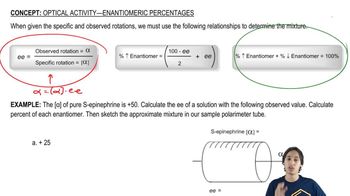What is the major product of the reaction of 2-methyl-2-butene with each of the following reagents?
j. Br2/CH3OH
 Verified step by step guidance
Verified step by step guidance Verified video answer for a similar problem:
Verified video answer for a similar problem:



 1:44m
1:44mMaster General properties of halohydrin formation. with a bite sized video explanation from Johnny
Start learning